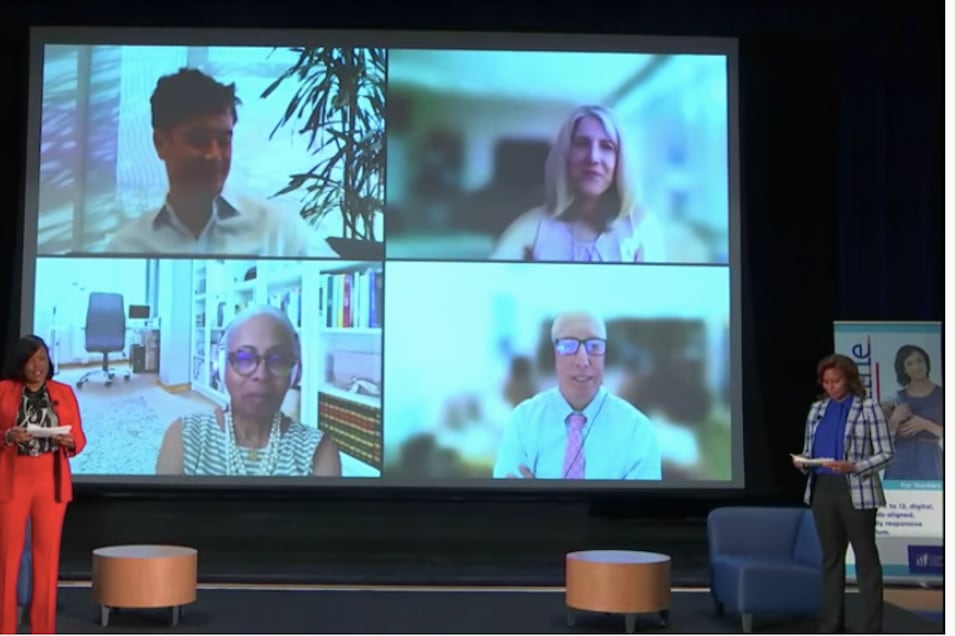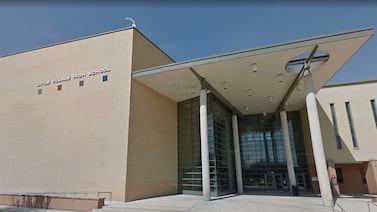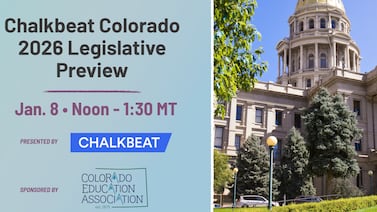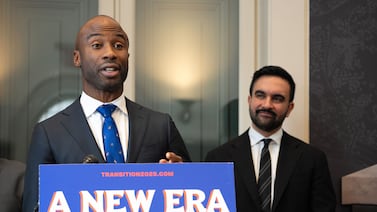In a glossy YouTube unveiling on Thursday, Chicago Public Schools offered a preview of its new, centralized $135 million curriculum called Skyline.
The district launched the curriculum project in 2019 and developed the curriculum bank with four publishers; a group of 300 district teachers customized it.
Chicago Public Schools introduced Skyline and some related materials Thursday, a day before LaTanya McDade, who oversaw the curriculum project, leaves her job as chief education officer. Her boss, schools chief Janice Jackson, steps down in two weeks. This week the district announced her temporary successor, interim CEO Jose Torres.
Jackson and McDade often have touted the value of a curriculum bank offering rich resources and culturally relevant materials to every school and teacher in the district.
In defending the $135 million cost, the pair said that teachers didn’t always have access to high-quality curriculum materials. While schools with more wealth could afford to purchase lessons and resources, higher-need schools had to scramble for curriculum or make do with outdated resources.
“When teachers are forced to find their own materials, the quality of those materials begins to vary widely,” McDade said Thursday.
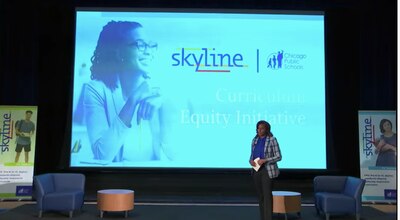
“Just like the skyline connects the city, Skyline was created to inspire and connect all of our schools with the high-quality, standards-aligned, culturally resourced curriculum that our schools need to succeed,” said Jackson in the YouTube video.
As of Thursday, the district had not made the Skyline curriculum bank accessible to the public.
The district said the digital curriculum bank, which is centralized and optional for schools to use, spans preschool to high school grades. It covers various subjects, including English, math, Spanish, and French.
It offers comprehensive lessons that teachers can customize. Each unit includes options for English language learners, mini-lessons for enrichment, and materials teachers can use to assess learning.
The district will make materials, all online, available via Google Docs that teachers can comment on, add suggestions for improvement, and adapt.
That customization, a panel of experts organized by the district said Thursday, makes Skyline stand out among curriculum projects undertaken by large public school districts.
Elaine Allensworth, director of the University of Chicago Consortium on School Research, said Thursday that she immediately noticed how the curriculum bank differed from curriculum developed by other cities that had middling to poor results.
“What I think is really unique about this is that teachers were involved in the development and it is grounded in Chicago,” said Allensworth. “It’s not a one-size-fits-all curriculum. Teachers can figure out what works for them and what works for their students.”
Panelist Scott Marion, executive director of the New Hampshire-based Center for Assessment, said that involving teachers in the customization and encouraging them to sustain and update it over time makes this effort unique.
“States are too frightened to get involved in curriculum work, yet we know that access to high-quality curriculum, or the lack of access to high-quality curriculum, is really one of the great contributors to inequalities we see manifest in our system,” said Marion.
District officials touted the curriculum bank’s lessons rooted in Chicago places and history that will resonate with children living here.
An example list of texts related to lessons includes several books based in Chicago and written by locals, such as Adam Gamble’s picture book “Good Night Chicago,” Kevin Coval’s anthology “The Breakbeat Poets: New American Poetry in the Age of Hip-Hop,” and Eve L. Ewing’s “Electric Arches,” an exploration of Black girlhood and womanhood that is partially set in the city.
Other works touch on topics of equity and diversity: Trevor Noah’s “Born a Crime: Stories from a South African Childhood” investigates the impact of apartheid, and Yangsook Choi’s “The Name Jar” explores themes of identity and assimilation.
“This is game-changing work,” McDade said in an interview with Chalkbeat Thursday. “As a district, this is a bold and audacious goal.”
Also Thursday, teachers and principals spoke about how the new curriculum can free up educators from the time-consuming and sometimes costly process of designing their own lessons — so they can focus instead on tailoring the instruction to specific student needs.
A centralized curriculum is also a powerful resource in a district where many students switch schools repeatedly, only to find themselves in unfamiliar territory with lessons in their new classrooms.
Juanita Martin, a teacher at New Sullivan Elementary on the city’s Far South Side, piloted draft Skyline lessons this school year with other educators. She said the phonics-based learning materials helped third graders who arrived in her classroom still unable to read get caught up.
She said she and her students appreciated the engaging games and activities that came with the curriculum: “It was all right there.”
Several students spoke about the importance of seeing themselves and their communities reflected in the curriculum.
Cassius Palacio, a senior at Brooks College Prep Academy, said learning about Afro-Latinos during Black History Month this year was revelatory: “I was so excited to see myself in the classroom for the first time.”
Officials said Thursday that the district will offer an extra hour of teacher training each week from the fall. McDade said the district plans ongoing professional development on the fully digital curriculum — a job made easier by the experience with technology all teachers got during the pandemic, including some training the district provided to educators earlier this school year.
“No matter how good your curriculum is, the instruction is going to be crucial,” said Gloria Ladson Billings, president of the National Academy of Education, and a professor emerita at the University of Wisconsin-Madison. “The proof is in the implementation.”

